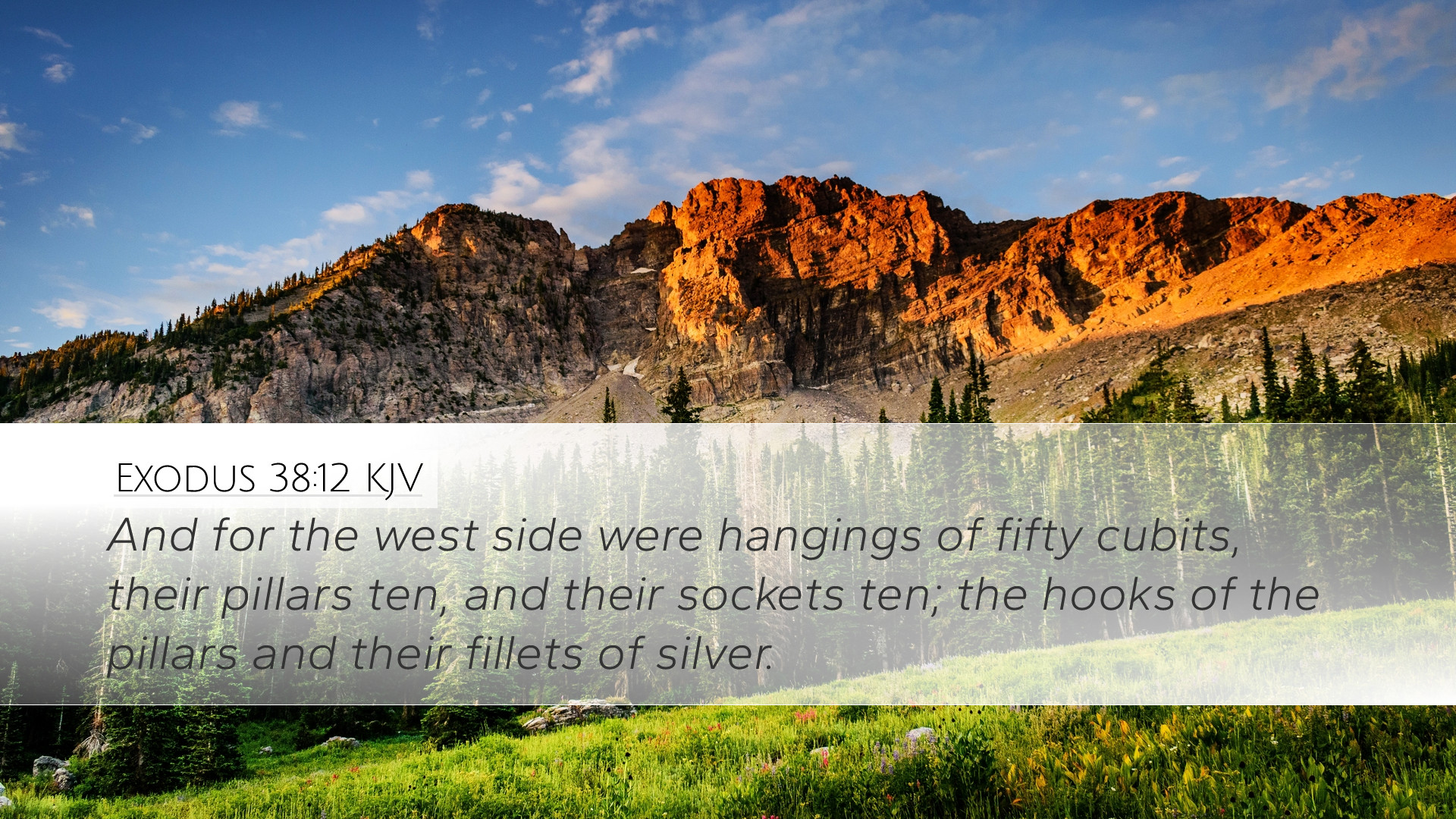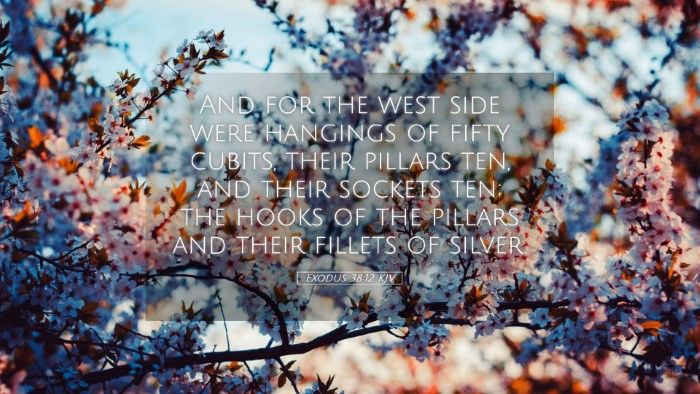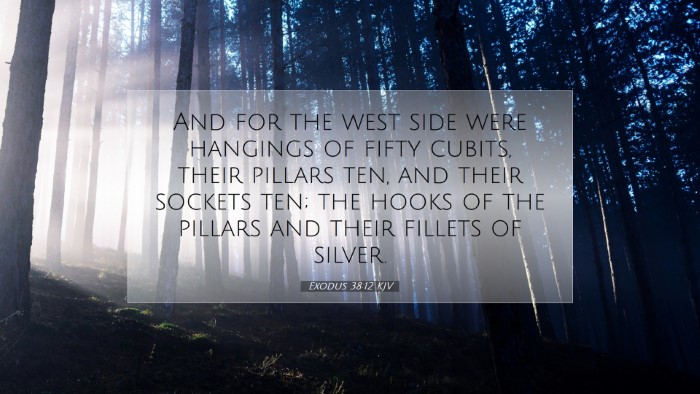Exodus 38:12 - Bible Commentary
Verse Reference: Exodus 38:12 - "And the other side was a hangings of fifteen cubits; their pillars three, and their sockets three."
Introduction
The description of the tabernacle, its furnishings, and its surrounding courtyards in the book of Exodus provides profound insights into the nature of worship and the relationship between God and His people. Exodus 38:12 highlights the construction details of the tabernacle's outer court, emphasizing both aesthetic and symbolic aspects of the sacred space. This commentary seeks to delve into the theological themes and practical implications of this verse.
Contextual Analysis
The context of Exodus 38 is critical as it follows an extensive description of the constructions commanded by God. The detailed specifications serve not just practical functions but also signify deep spiritual truths about God's design for worship.
Historical Background
This chapter occurs after the nation of Israel has been liberated from Egypt, marking the beginning of their covenant relationship with Yahweh. The construction of the tabernacle represents God's desire to dwell among His people and is part of the divine instruction given to Moses on Mount Sinai.
Commentary Insights
Drawing from the works of Matthew Henry, Albert Barnes, and Adam Clarke, we can extract layered meanings from Exodus 38:12.
Matthew Henry's Perspective
Matthew Henry reflects on the significance of every detail in the construction of the tabernacle. He notes that the "hangings" represent the separation between the holy and the profane, hinting at the need for boundaries in worship. The number fifteen signifies completeness, suggesting that God’s presence is fully embraced and appropriately contained within the specified limits.
Albert Barnes' Insights
Albert Barnes provides a floor plan view, suggesting that the measurements of the pillars and their bases were meticulously designed to accommodate the people as they approached the sacred space. The use of three pillars implies strength and support, signifying the triune nature of God who sustains all worship. In essence, this emphasizes that worship is not only a personal endeavor but also a communal activity supported by divine structure.
Adam Clarke's Commentary
Adam Clarke expounds upon the materials used for the hangings, suggesting that their quality reflects the glory of God. He asserts that the hangings serve as a metaphor for Christ’s atoning work, separating humanity from sin and allowing for a holy communion with God. Clarke links the construction of the tabernacle to the need for sanctification, highlighting that while God desires to dwell among us, there is always a need for atonement and preparation before entering His presence.
Theological Themes
- Separation and Holiness: The hangings act as a boundary to preserve the holiness of God. They symbolize the need for separation from the world to adequately approach God in worship.
- Divine Design: Every detail of the tabernacle was divinely ordained, underscoring that God has a specific plan for worship and community among His people.
- Strength in Structure: The poles and their bases suggest a stability of faith and the communal aspect of worship, which bolsters individual believers.
- Foreshadowing Christ: The very fabric of the tabernacle points to the future revelation of Jesus Christ, who would ultimately serve as both the mediator and the sacrifice for His people.
Practical Implications
The practical implications of this verse extend beyond the ancient Israelites to modern-day believers. The careful structure and boundaries established within the tabernacle serve as reminders of our call to holiness.
Challenges for Today’s Believers
As the church today encounters a world that often blurs the lines of righteousness, the example set forth in Exodus 38:12 encourages contemporary Christians to uphold the sanctity of worship environments. Believers are called to create spaces—both physical and spiritual—where God’s holiness is revered, and where all who enter are made aware of His majestic presence.
Call to Worship
Ultimately, Exodus 38:12 beckons believers to recognize the significance of coming before God. By emphasizing the order and symmetry in God’s design, He illustrates that pleasing worship arises from reverence and adherence to divine instruction. This encourages pastors and leaders to cultivate environments that reflect God’s character, inspiring congregations to approach Him with sincerity and respect.
Conclusion
Exodus 38:12 encapsulates key elements of worship, revealing the intricate relationship between God and His people throughout biblical history. By engaging with its rich commentary, students, scholars, and clergy are reminded of the holy call to live as distinct people of God—set apart for His glory, anchored in the truth of His Word, and committed to approaching Him with hearts prepared.
In summary, the insights from public domain commentaries provide a multifaceted understanding of this verse, inviting us to embrace its teachings in both our corporate and private lives as we strive to be faithful stewards of God's presence among us.


